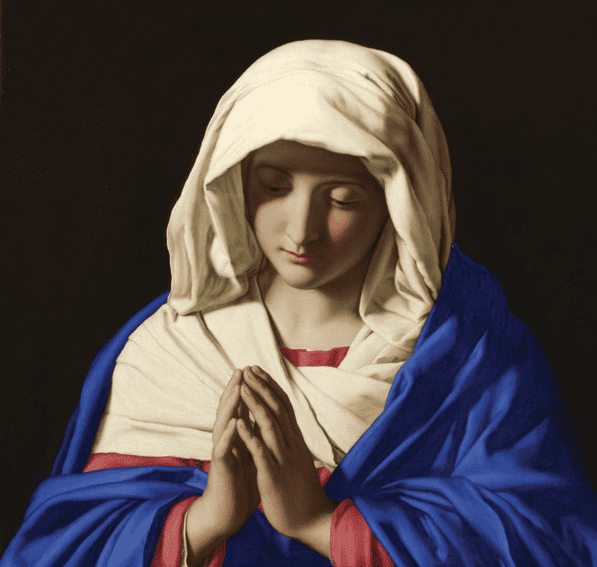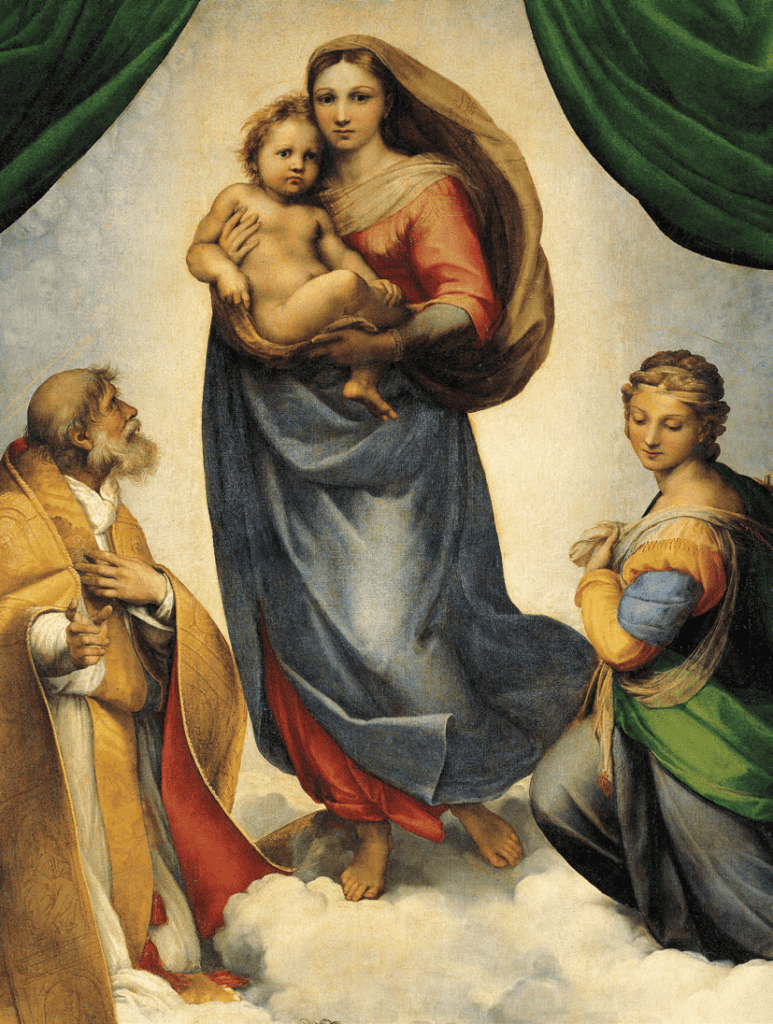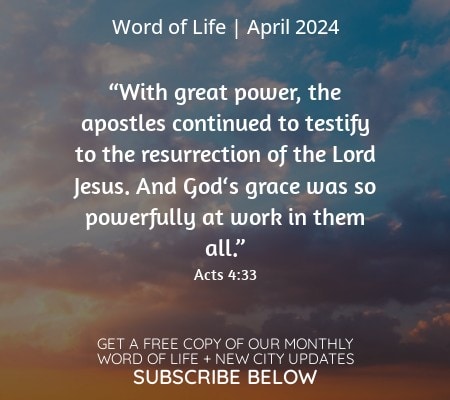
The Magna Carta1 of Christian social doctrine began with the words of Mary: “He has put down the mighty from their thrones, and exalted the lowly; he has filled the hungry with good things, and sent the rich away empty-handed” (Lk 1:52-53).
The greatest and most sweeping revolution of all times is contained in the Gospel.
Perhaps it is part of God’s plan that in this age, deeply concerned as it is with social problems, it should be Our Lady to help all of us build, consolidate, raise up, and show the world a new society in which the powerful words of the Magnificat will re-echo.
Our Lady did not go to Elizabeth to sing the Magnificat but to help her. In the same way, we must not go to our neighbors to reveal to them the spiritual treasure we carry in our hearts, but to share with them their sorrows and burdens, their joys and responsibilities.
If we do this perfectly, soon, the time will come when we shall be able to open our hearts in order to share our spiritual riches with our neighbors. Then, together with them, we will be able to love the One who has shown us how to treat one another as brothers and sisters.
Mary did not preach, nor did she teach, nor put herself forward in any way.
And yet, the truth is that the whole world is captivated by her beauty.
Often, to ensure a smooth passage to the next life, it is sufficient in that decisive moment to invoke her with a “Hail Mary.”
In her name, basilicas and shrines are erected.
Thousands of sculptors use their creative talents to look for new ways of depicting her and do not consider themselves true artists unless they have carved at least one statue in her honor.
God was able to fulfill his plan, his will, in her, and it is the presence of God in such an exalted creature that makes Mary’s presence felt in every corner of the earth.
Mary’s desolation was not something she experienced only when Jesus died. The Mother of Jesus underwent an incredible training in desolation throughout her life.
As a child, she offered her life to God when all the young girls of that time thought only of becoming mothers. She was alone in making this offering, alone in the world.
Subsequently, she presented Jesus in the temple where she heard the announcement of her own “way of the cross.’ She went through life with the echo of those words in her heart, and these colored everything she did with a sense of detachment.
When Jesus was twelve years old, she lost him.
When he was thirty, she followed him in the hard struggles of the three years, rich in fruits, crowned with glory, embittered by the rancor of human ingratitude.
And at the crucifixion, she pronounced the final fiat2 of her desolation, in an abyss of suffering which went beyond the limits of human endurance. She stood firm at the foot of the cross because of an extraordinary grace merited by the long harsh preparation which preceded that moment.
And so Mary, because of this life-long experience of solitude, was able to become the mother of each one of us, of the whole of humanity.

It is not written that Mary looked after other people during the lifetime of Jesus. It was at the moment of her desolation at the foot of the cross and after her loss of Jesus, that a new maternal love was born in her for the Apostles and for all people.
After this suffering, we see her taking on a new role: we find her at the heart of the newborn Church, awaiting a new descent of the Holy Spirit. And since the Holy Spirit worked such wonders in the Apostles, transforming them beyond recognition, that same Holy Spirit must have also brought about in Mary a new fullness, which, even to this day, we do not completely comprehend. Perhaps it is the task of this Marian age to measure the depths of the effects of Pentecost on Mary, and to grasp the remarkable changes wrought in the one who participated with Christ in the Redemption… the one who is the heavenly leader of the Church in its struggles.
We think too seldom of the “passion” of Mary, of the swords which pierced her heart, of the terrible abandonment she experienced on Calvary when Jesus entrusted her to the care of others…
Maybe the reason for this is that Mary understood only too well how to conceal beneath a mantle of sweetness, light and silence, her intense, tormented agony.
And yet there is no sorrow like hers…
If one day our sufferings should reach such intensity that everything in us rebels against our pain because the very fruit of our “passion” seems to be withdrawn from our hands and even from our hearts, then let us remember her.
It is this anguish that will make us resemble her more closely; it is through this anguish that the figure of Mary will emerge more clearly in our lives: Mary, the all-beautiful, the mother of everyone, because she was detached from everyone and, most of all, from her divine Son because of God’s divine will.
Mary’s contribution to the Redemption was not so much one of works, words, and clamor; it was, above all, a contribution of life, silence, and tears.
Louis de Montfort says that Mary felt “no attraction more powerful and more constant than that of “being hidden from herself and from everyone in order to be known by God alone…”
Precisely, the opposite holds true for us.
The words of St. Paul, “My desire is to depart and be with Christ” (Phil 1:23), often find an echo within us. The desire to be freed from our bodies in order to be with Christ, is something we, too, can experience. On certain “Good Fridays” of our spiritual life, we share in the suffering of Mary’s desolation when, at the foot of the cross, her dead Son in her arms, she could not but long to pass on to the next life where her supreme Good was.
But she resigned herself to remain, and found strength, courage and commitment in John, who cared for her from then on, and in the other Apostles to whose service she dedicated herself.
When Jesus left you, Mary, where did you seek him, you who were accustomed to watching him and following his every movement, to recognizing every expression on his face, every thought, every hint of suffering and joy? You sought him in the depths of your heart. Then, once more, you were conscious of being – though now in a mystical way – the temple of the Most High: a true Christian, the model for each one of us.
When the disciples were gathered together with Mary, the Holy Spirit descended on them.
With Mary… she who was born immaculate, visited by an angel, already “experienced” in descents of the Holy Spirit, the Mother of Jesus, with manifold claims to be extraordinarily favored by God.
The Apostles were aware of this and must have rejoiced to have her among them as a guarantee of the Eternal.
Today, too, the successors of the Apostles, gathered together in a new Cenacle, desire to have her spiritually present among them: “We pray with Mary, the Mother of Jesus,” says the document which the Fathers of the Council addressed to all peoples of the world.
Today, too, it will be Mary who will prepare the ground to facilitate the work of the Holy Spirit for the new Pentecost the world is awaiting.
Jesus did not only say, “Woman, behold your son!” but, turning to John, he also said, “Behold, your mother!” (Jn 19:26-27). From this, we see that Jesus entrusted the whole of humanity to Mary, and also gave a mother to each one of us.
We have to try to act, therefore, as her children. We must not simply be children who admire and imitate her but children who help, share, collaborate, depend upon, suffer, and win the battles that she has to conduct on this earth throughout the centuries – she who was presented to the world as the woman who would crush the serpent’s head. We have to be worthy children, taking on ourselves, as far as possible, her concerns for all her other children, so that, in some way, we can be her arms here on earth. Then it can be said about us, too: “And from that hour the disciple took her to his own home” (Jn 19:27).
Mother, we come to you in our need because you give a hearing to all; our faith tells us this, and our heart confirms it.
Chiara Lubich
C. Lubich, Fragments of Wisdom, (Bombay: The Mariapolis Trust, 1992), pp. 35-42
1 A charter of rights
2 From Latin: “let it be done”




